Content
All issues / Volume 16 (2022) / Issue 4 (April)
Stoyko Fakirov
Vol. 16., No.4., Pages 337-337, 2022
DOI: 10.3144/expresspolymlett.2022.25
Vol. 16., No.4., Pages 337-337, 2022
DOI: 10.3144/expresspolymlett.2022.25
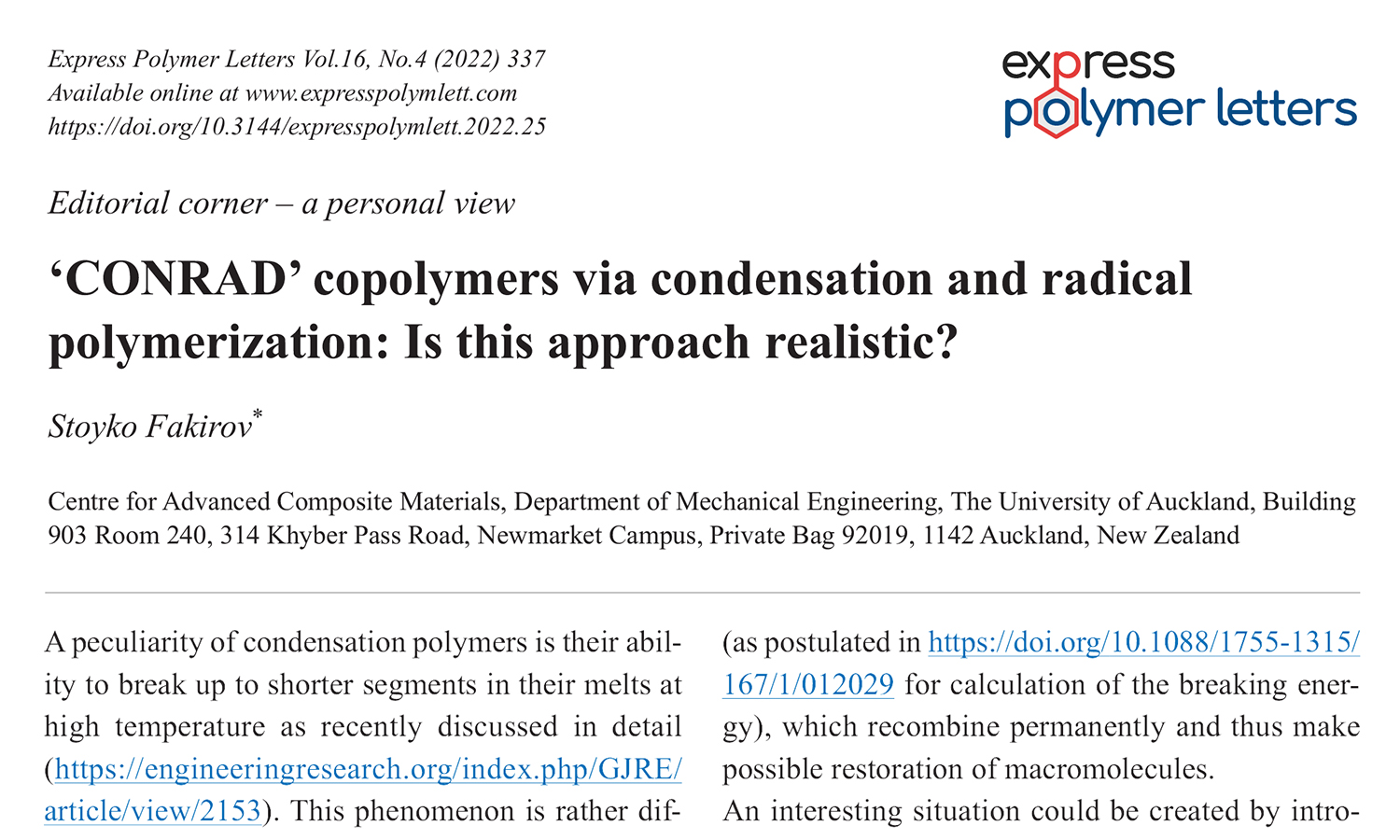
This is an editorial article. It has no abstract.
Clement Freymond, Alain Guinault, Matthieu Gervais, Miroslaw Pluta, Tomasz Makowski, Ewa Piorkowska, Cyrille Sollogoub
Vol. 16., No.4., Pages 338-353, 2022
DOI: 10.3144/expresspolymlett.2022.26
Vol. 16., No.4., Pages 338-353, 2022
DOI: 10.3144/expresspolymlett.2022.26
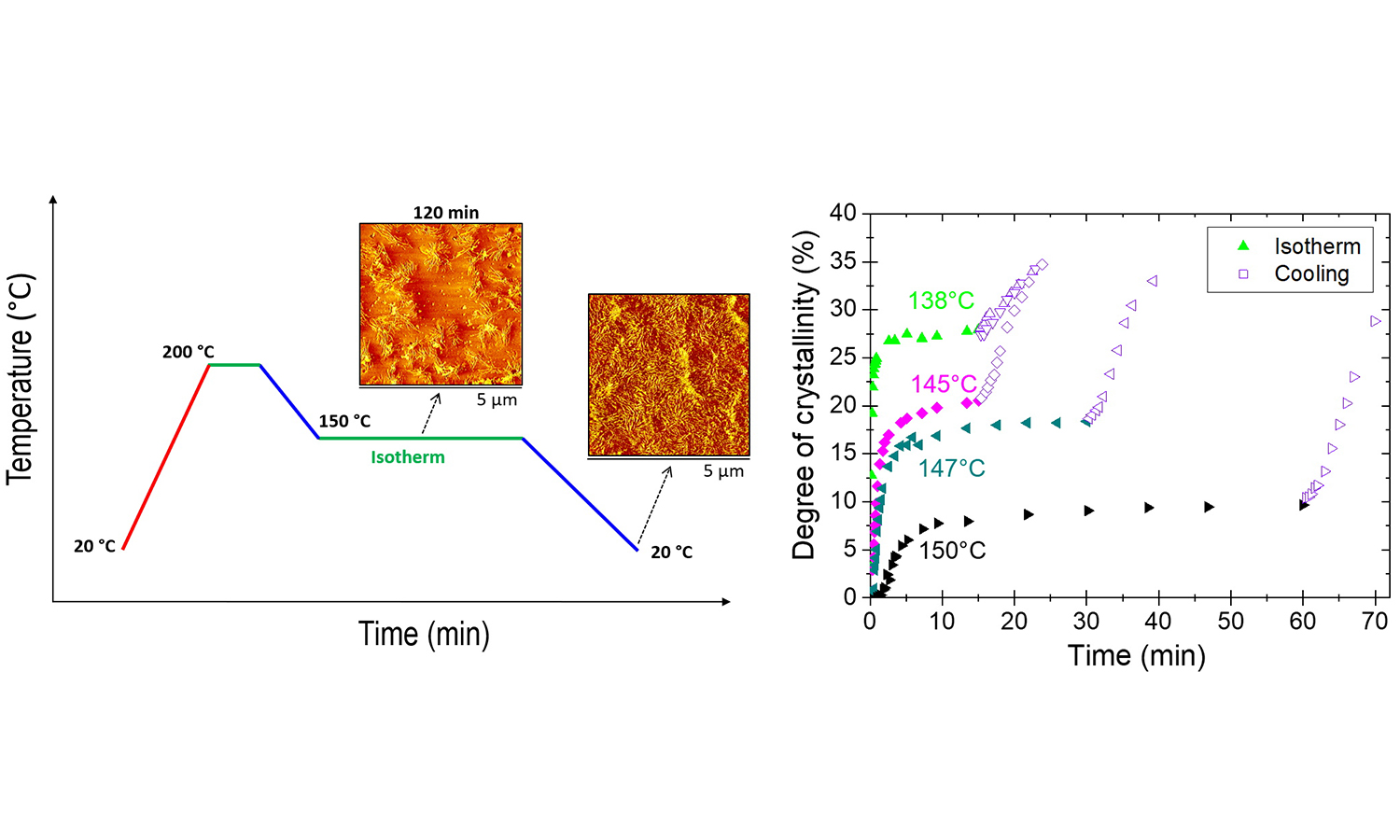
This work is a first attempt to study the crystallization behavior of ethylene-vinyl alcohol copolymer with 44 mol% of ethylene units (EVOH44) and to observe the supermolecular structures developed during its crystallization. Thermal analysis has evidenced a very fast crystallization and the formation of different crystal populations during isothermal crystallization. In-situ wide-angle X-ray scattering experiments using a synchrotron radiation source have shown a unique orthorhombic morphology, independently of the crystallization conditions. Small spherulites (with an average radius of about 1 μm) were observed using polarized optical microscopy and confirmed by typical four-leaf patterns obtained by small-angle light scattering. In-situ atomic force microscopy has revealed stacked lamellae growing from common centers to form small spherulitic entities. Finally, studies of isothermal crystallization have evidenced the existence of partial crystallization (especially at high crystallization temperatures) and the need for higher undercooling to complete crystallization.
Mattia Ramini, Silvia Agnelli, Giorgio Ramorino
Vol. 16., No.4., Pages 354-367, 2022
DOI: 10.3144/expresspolymlett.2022.27
Vol. 16., No.4., Pages 354-367, 2022
DOI: 10.3144/expresspolymlett.2022.27
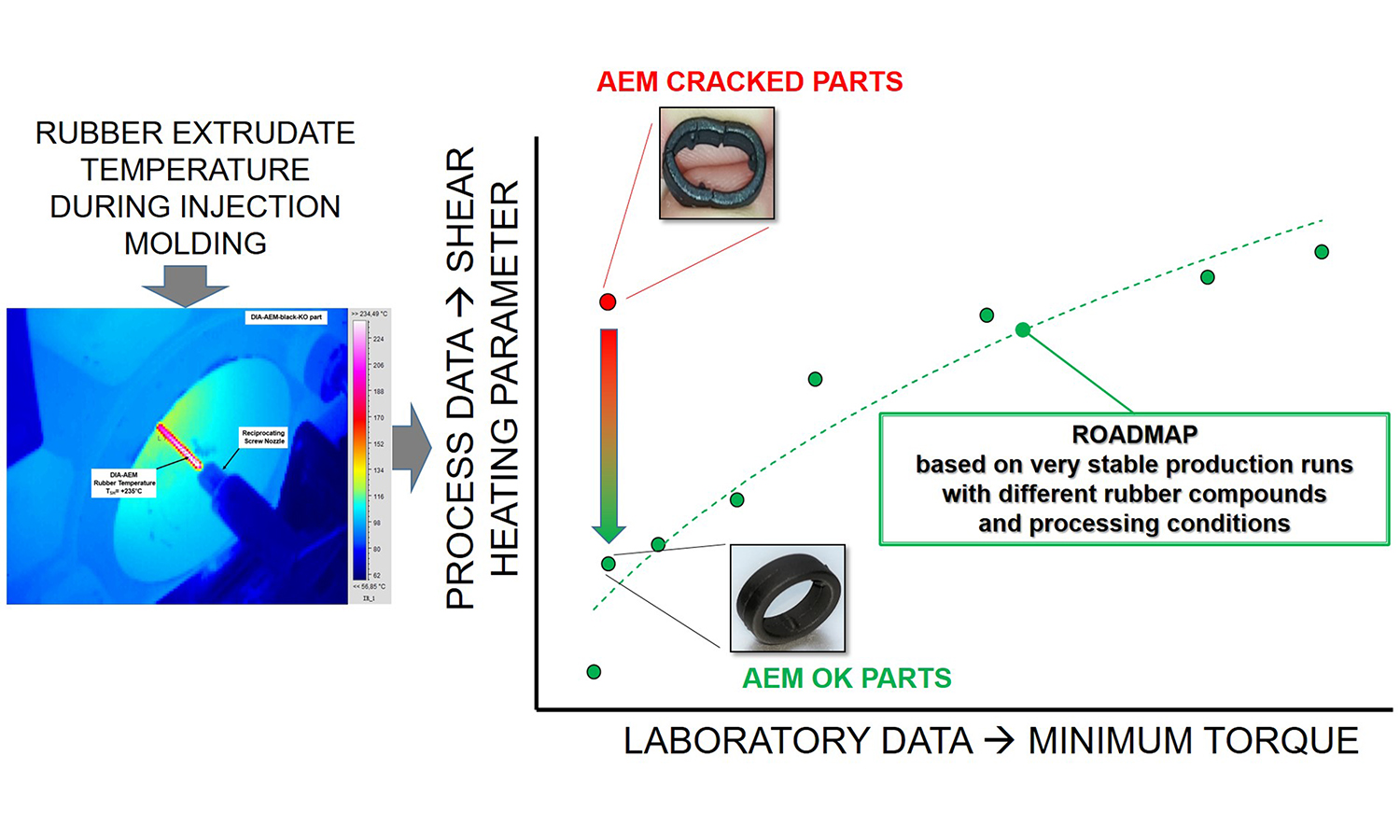
Shear heating phenomena during injection molding of rubber compounds greatly affect product quality but are difficult to control and replicate with laboratory tests. In this work, a very fast online process control of industrial injection molding is proposed, based on the measurement of surface temperature by infrared thermal camera of the rubber as it leaves the extruder barrel. Moreover, a new technological parameter (shear heating parameter, ηSH) is calculated from the measured temperature. A robust correlation between ηSH and viscosity from rheometric laboratory measurements was achieved for different rubber compounds. This represents an operating roadmap to support the process engineer in the improvement of process control. To show the potential of this tool, it was successfully used to optimize the injection molding of industrial production of AEM rubber compound affected by scorching and thermal degradation issues. ηSH was found to be suitable for industrial practice and able to provide accurate information about thermal history and process safety.
Nehal Salahuddin, Mohamed Gaber, Sahar Elneanaey, Mohamed Ahmed Abdelwahab
Vol. 16., No.4., Pages 368-387, 2022
DOI: 10.3144/expresspolymlett.2022.28
Vol. 16., No.4., Pages 368-387, 2022
DOI: 10.3144/expresspolymlett.2022.28
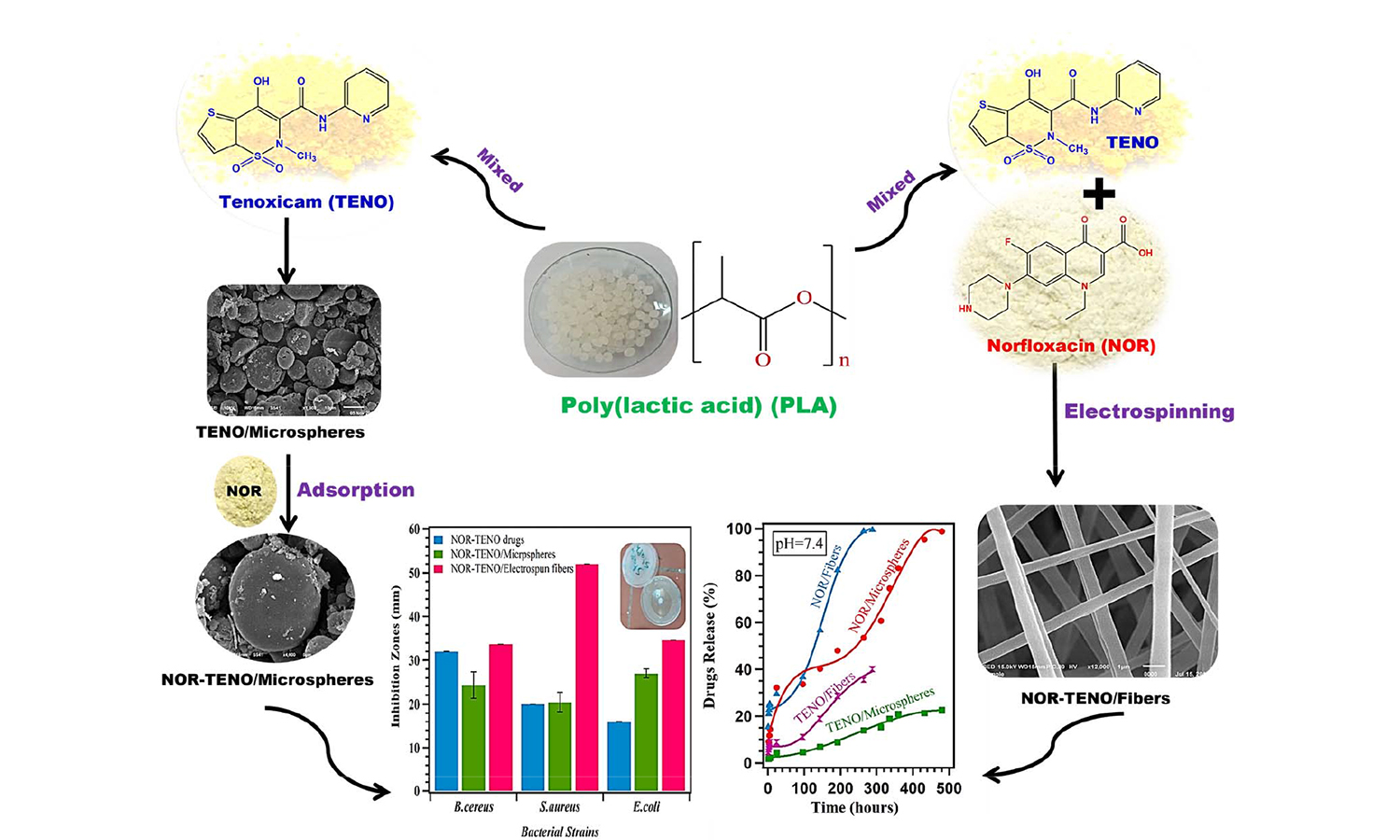
This study presents a new dual drug delivery system (DDDS) of poly(lactic acid) (PLA) with different morphologies (spheres and fibers). One approach for delivering Norfloxacin-Tenoxicam (NOR-TENO) drugs based on PLA microspheres was prepared by encapsulating TENO into PLA via emulsion-evaporation method to form TENO/microspheres then NOR was then adsorbed onto the surface of these microspheres by loading process. Another approach was designed by integrating a mixture of NOR-TENO drugs into the PLA matrix, then through the electrospinning process; NOR-TENO/electrospun fibers were fabricated. The microspheres and electrospun fibers had been characterized through FTIR, XRD, and SEM. Release behaviors of NOR-TENO were determined at pH (5.4, 6.7 and 7.4), where the release of the two drugs was faster in the two systems at pH 7.4. Antimicrobial activity of NOR-TENO/microspheres and NOR-TENO/electrospun fibers against S. aureus, B. cereus, and E. coli bacteria was examined in vitro, and NOR-TENO/electrospun fibers have better potential in killing bacteria. In vitro cytotoxicity assay of NOR-TENO/microspheres against HepG2, MCF-7, and HCT116 tumor cells were tested, and NOR-TENO/microspheres was highly cytotoxic to MCF-7 cells (IC50 = 21.87 μg・ml–1) with the lowest cytotoxic effect on WI-38 normal cells (the half maximal inhibitory concentration IC50 = 58.12 μg・ml–1). In vivo study of DMBA-induced breast cancer in rats had been accomplished for NOR-TENO/microspheres, which offer promising results in breast cancer treatment.
Ana Antunes, Anton Popelka, Adriaan Stephanus Luyt, Abdelrahman Mahmoud, Omar Yosef Aljarod, Mohamed Hassan, Peter Kasak
Vol. 16., No.4., Pages 388-409, 2022
DOI: 10.3144/expresspolymlett.2022.29
Vol. 16., No.4., Pages 388-409, 2022
DOI: 10.3144/expresspolymlett.2022.29
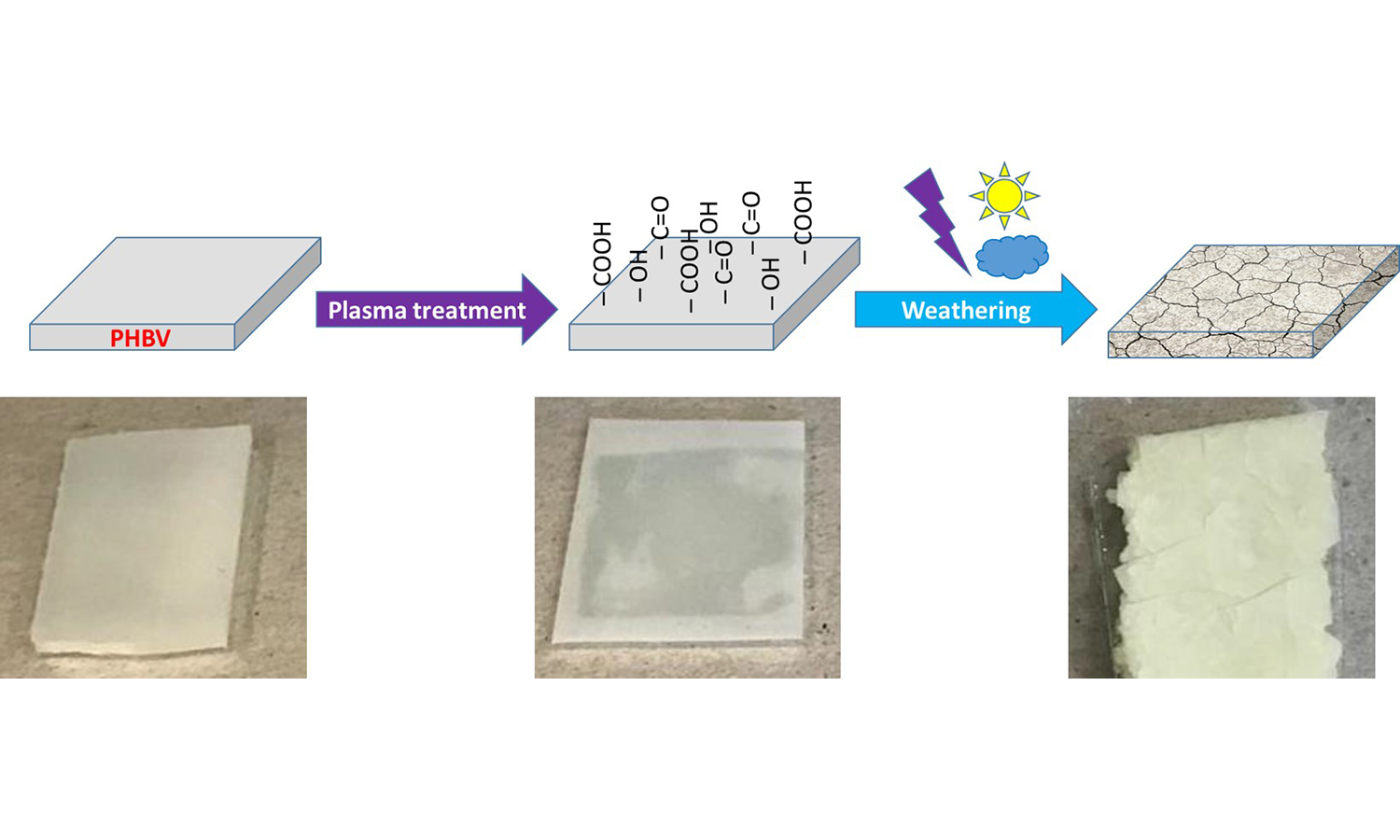
Poly(3-hydroxybutyrate-co-3-hydroxyvalerate) (PHBV) is a polyester, produced naturally by microorganisms, with excellent biocompatibility. Corona and radio-frequency (RF) plasma treatment were applied in order to improve the degradation process of PHBV. Samples were subjected to an accelerated weathering test for 500, 1000, and 2000 h of weathering exposure and to natural weathering for one year. Various analytical, spectroscopic, and microscopic techniques have been used to analyze the degradation process. This study revealed that corona and RF plasma treatment acted as a hydrolytic and ultraviolet light (UV) degradation promoter for PHBV. Both plasma treatments chemically modify the PHBV surface resulting in better wettability contributing to the hydrolytic degradation. Microscopic analysis revealed a rougher defects-containing surface of plasma-treated PHBV in comparison with untreated PHBV after the degradation process, promoting deeper water diffusion and UV penetration. The photo- and hydrolytic degradation caused significant surface changes of plasma-treated PHBV after 2000 h of accelerated weathering and one year of natural weathering. Moreover, deterioration in mechanical properties has been more pronounced in the RF plasma-treated samples. These results demonstrate the potential use of plasma treatment on improving the degradability of PHBV.
Tommasina Coviello, Franco Alhaique, Chiara Di Meo, Pietro Matricardi, Elita Montanari, Nicole Zoratto, Mario Grassi, Michela Abrami
Vol. 16., No.4., Pages 410-426, 2022
DOI: 10.3144/expresspolymlett.2022.30
Vol. 16., No.4., Pages 410-426, 2022
DOI: 10.3144/expresspolymlett.2022.30
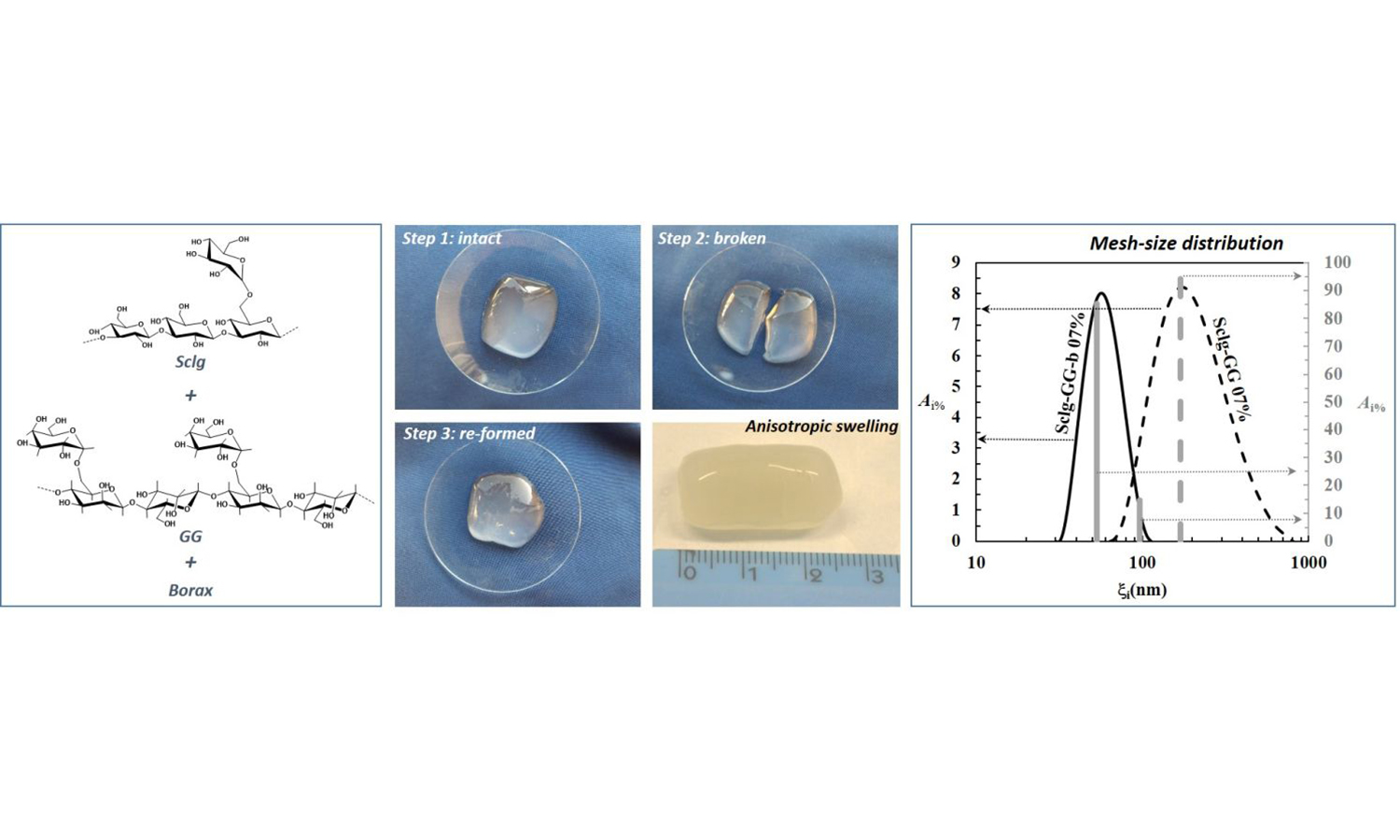
Scleroglucan (Sclg) and Guar Gum (GG) are both capable to give gels in the presence of borax and this study is focused on how a mixed system of the two polysaccharides can be affected by the addition of borax. The anisotropic swelling behavior of tablets obtained by compression of the freeze-dried new gel system is also investigated and compared to that of Sclg and GG alone. Rheological characterization evidences a synergistic effect in terms of critical time, mesh size, as well as crosslinking density. Also creep recovery experiments, carried out in the presence of borax, show a synergistic effect: when the polymers are mixed, a quite low compliance was estimated in comparison to that of Sclg and GG. On the other side, the flexible chains of GG induce the self-healing properties of the mixed gel system, since the rigid triple helix of Sclg does not show such peculiar characteristics.
The deep insight of the physico-chemical properties of the new hydrogel system can play a fundamental role for the optimization of its practical application (e.g., in drug delivery, cosmetic products, human tissue repair, wound dressing and food staff).
Estefania Correa, Maria Elena Moncada, Italo Moglia, Victor Hugo Zapata
Vol. 16., No.4., Pages 427-438, 2022
DOI: 10.3144/expresspolymlett.2022.31
Vol. 16., No.4., Pages 427-438, 2022
DOI: 10.3144/expresspolymlett.2022.31
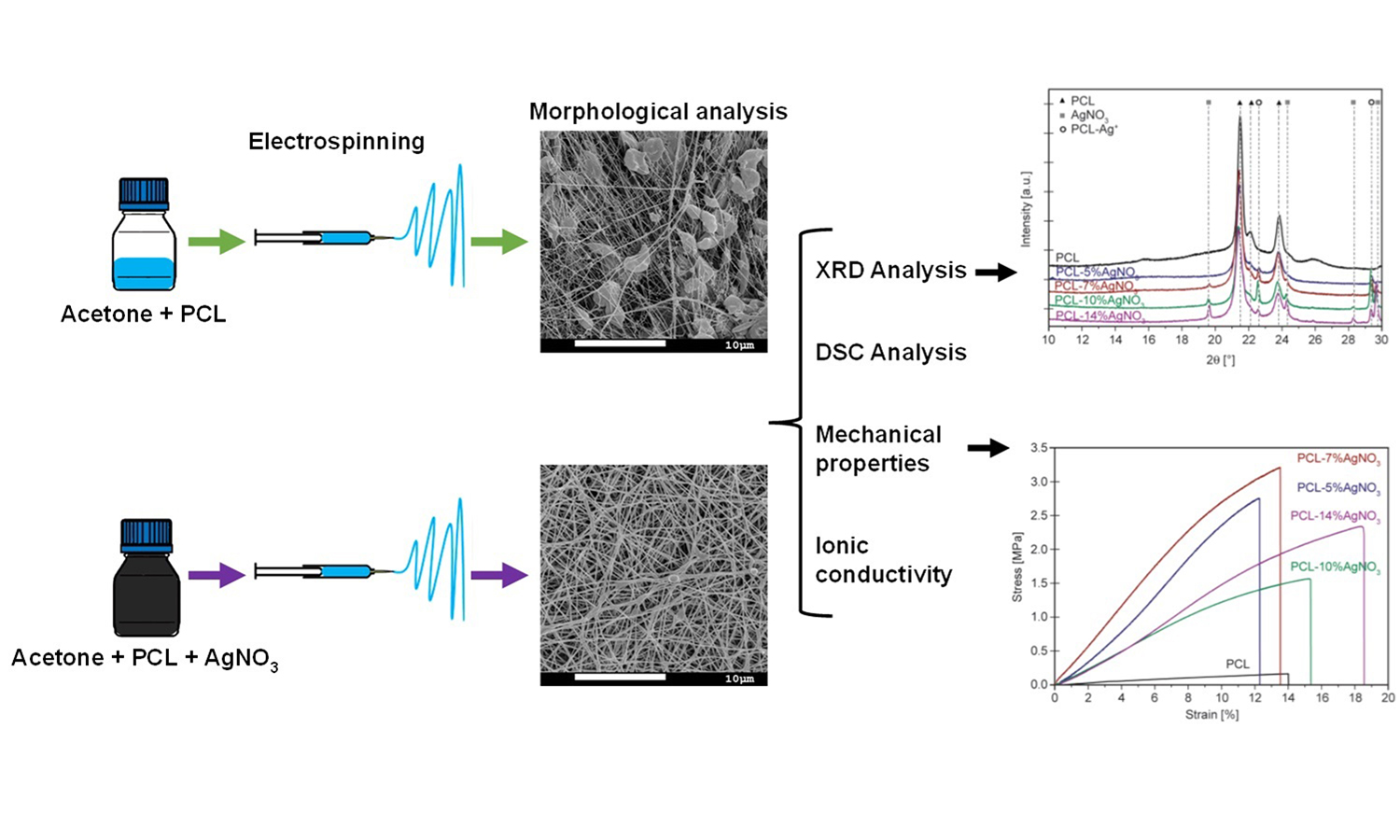
The present work studies the effect of the addition of silver nitrate on the morphological, thermal, structural, mechanical, and electrical conductivity properties of polycaprolactone-AgNO3 membranes obtained by electrospinning, with a potential application for electrical stimulation in tissue engineering. The pure PCL membrane presented beads and fine fibers, while the PCL-AgNO3 membranes presented bead-less and greater diameter fibers than the pure polymer. Polymer crystallinity was affected by the salt due to the formation of complexes between the ions and the polymer, which affects polymer chains organization. These changes in fiber morphology and polymer chain organization affected their mechanical properties, resulting in a greater Young’s modulus and ultimate tensile strength with added salt. The ionic conductivity of the sample with 10% salt (2.02・10–3 S/m) is close to the conductivity of cortical bone (1.82・10–3–6.67・10–3 S/m), which indicates its potential application for electrical stimulation in bone tissue engineering.
Saengrawee Sriwichai, Sukon Phanichphant
Vol. 16., No.4., Pages 439-450, 2022
DOI: 10.3144/expresspolymlett.2022.32
Vol. 16., No.4., Pages 439-450, 2022
DOI: 10.3144/expresspolymlett.2022.32
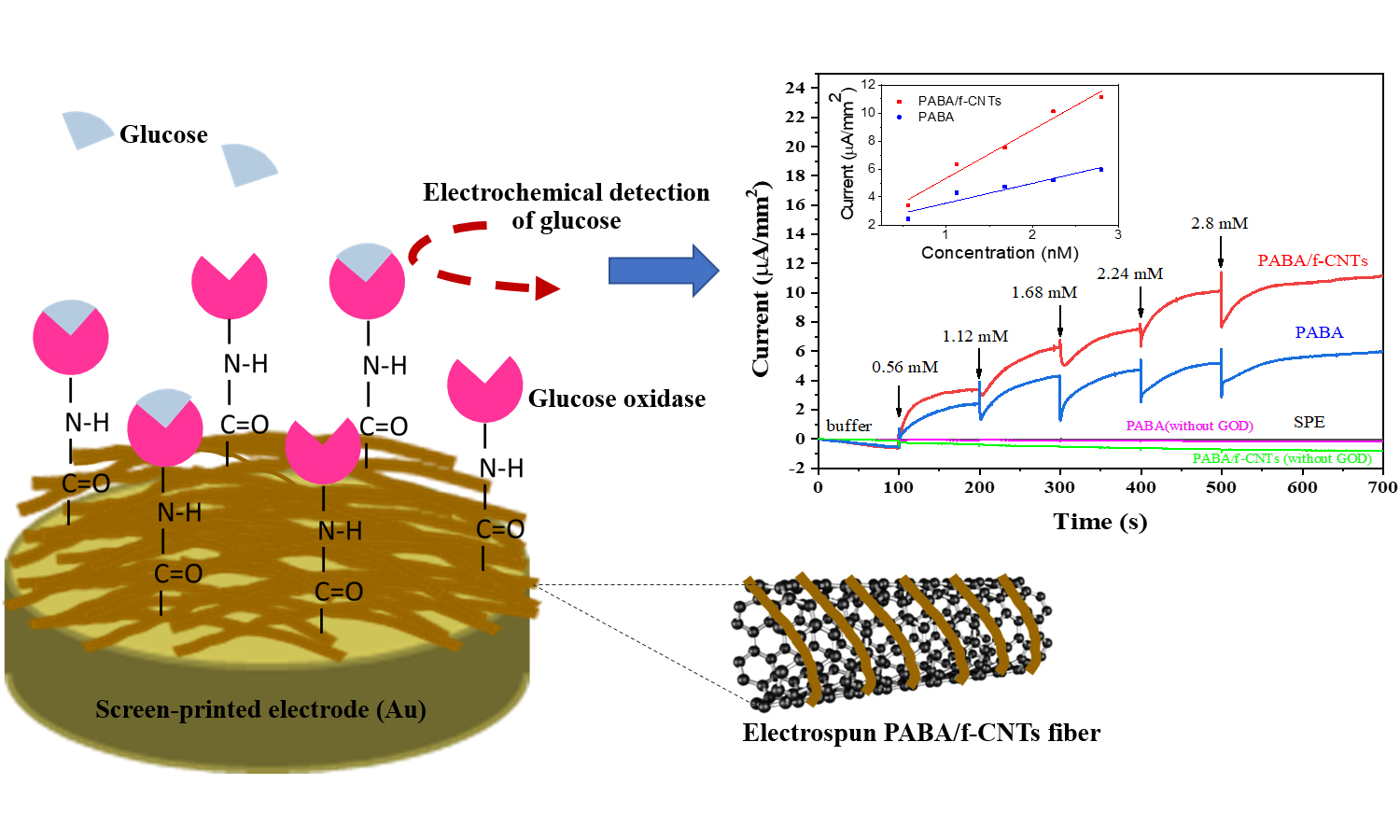
A glucose sensor has been developed for daily diagnosis due to high level of glucose can cause diabetes. This study purposes of fabricating an electrospun fiber film of poly(3-aminobenzylamine) (PABA)/functionalized multi-walled carbon nanotubes (f-CNTs) composite for use as electrochemical glucose biosensor. The electrospun PABA/f-CNTs composite film was fabricated on a screen-printed electrode and characterized by attenuated total reflectance-Fourier transform infrared spectroscopy (ATR-FTIR), X-ray diffraction (XRD) and X-ray photoelectron spectroscopy (XPS), and field emission–scanning electron microscopy (FE-SEM). The presence of f-CNTs in the composite could enhance the electrochemical activities of the PABA, which was confirmed by cyclic voltammetry (CV), amperometry, and electrochemical impedance spectroscopy (EIS). The electrochemical glucose biosensor based on the electrospun PABA/f-CNTs composite film showed a sensitivity of 0.40 μA·mm–2·mM–1 with LOD of 0.067 mM in the linear range of 0.56–2.8 mM, high selectivity under the common interferences (i.e., uric acid, ascorbic acid, and dopamine) and good stability up to 1 week with the current response retained about 80%.


